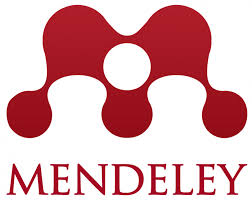Link: https://sinta.kemdikbud.go.id/journals/profile/8036
Article Retraction
At Jurnal Pensil, we have a commitment to maintaining the integrity of the academic record, so there are times when there is a need to retract articles. An article would be retracted for the following reasons:
To make sure that retractions are handled to the best practice of publications, and also in accordance with COPE retraction guidelines, Jurnal Pensil make use of the following retraction process:
Note: if the author retains copyright for an article, this does not qualify them for the right to retract it after publication. The integrity of the public scientific record is important, and COPE's Retraction Guidelines still apply in such cases.
Article Withdrawal
It is not in the jurisdiction of an author to withdraw a submitted manuscript. This is because referees, editors, and publishers have spent a lot of time editing and processing the submitted manuscript leaving the sudden retraction a waste of valuable resources. Before an author submits a manuscript, through our OJS, the author is required to provide the following checklist:
Article Correction
Issuing a correction is considered by Jurnal Pensil if the following happens:
Corrections to peer-reviewed content fall into one of these three categories:
Deciding whether a correction should be issued is made by the editor of a journal, and this sometimes comes with advice from Reviewers or Editorial Board Members. Handling Editors would contact the Authors of the concerned paper with a clarification request, but the final decision on a correction is required, and if so, which type rests on the editors.
Article Removal
There might be a need to remove a published article from an online platform in a limited number of cases. This would only occur if an article is defamatory or infringes the legal rights of others, or we have good reason to believe that the publication would cause certain court orders. In such situations, while the metadata of the article will be retained, the text would be will be replaced with another screen, which points out that the article has been removed to prevent any legal complications.
Article Replacement
At a point, an author of an original paper may wish to remove or retract the flawed original and replace it with another corrected version. Under these circumstances, the retraction procedure would be followed, with the difference stating that the article retraction notice would contain a link to the – corrected – re-published article alongside the history of the document.
| ..:: MAIN MENU ::.. |
| Focus and Scope |
| Editorial Team |
| Reviewers |
| Contact Us |
| Journal History |
| Indexing |
RECOMMENDED TOOLS


Editorial Address: LPPM UNJ, Gedung Ki Hajar Dewantara Lt.6-7, Jalan Rawamangun Muka, Jakarta Timur, Provinsi DKI Jakarta
Publisher Website: https://lppm.unj.ac.id/ & https://journal.unj.ac.id/
Email: jurnalpensil@unj.ac.id
Social Media

This work is licensed under a Lisensi Creative Commons Attribution-ShareAlike 4.0 International.
